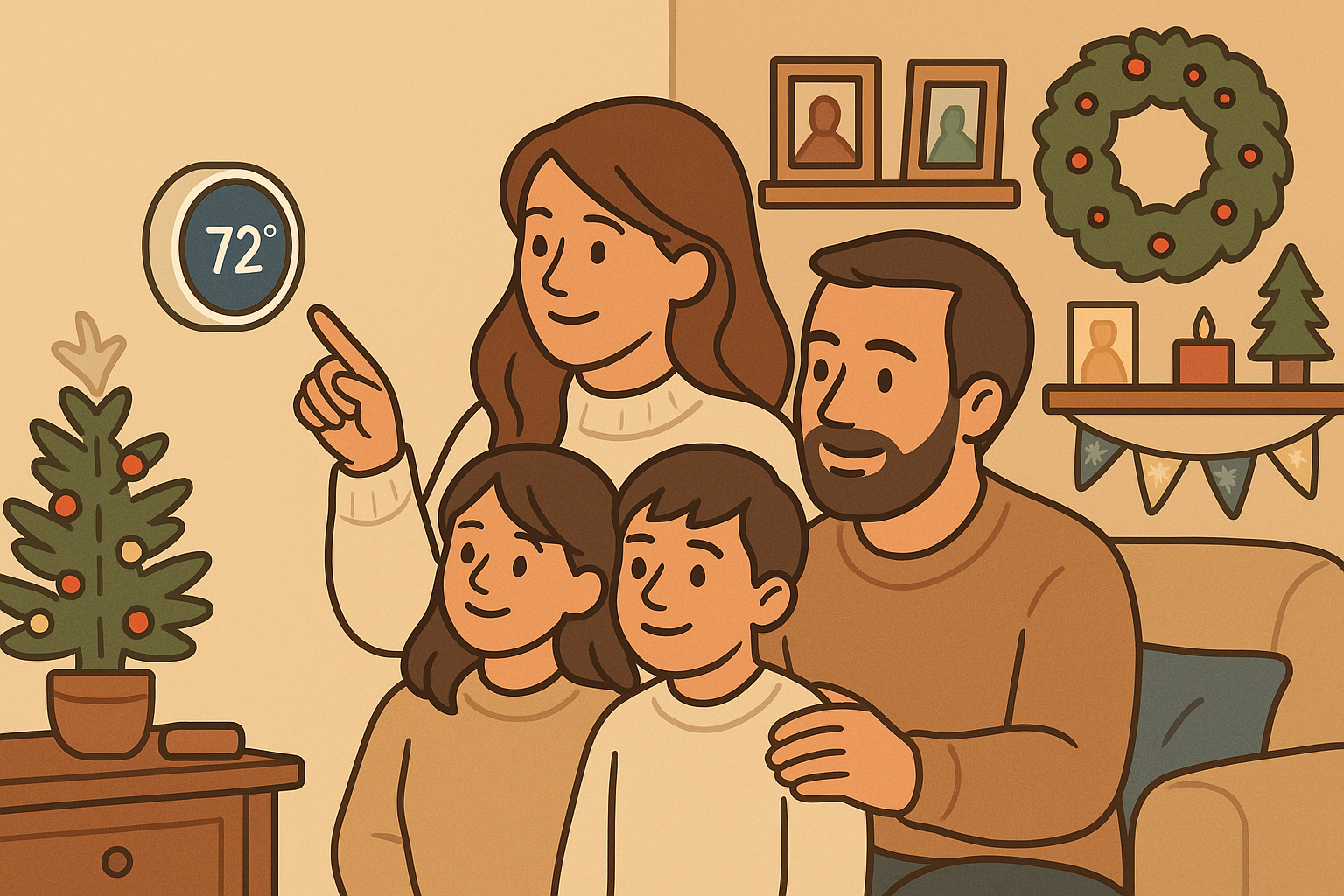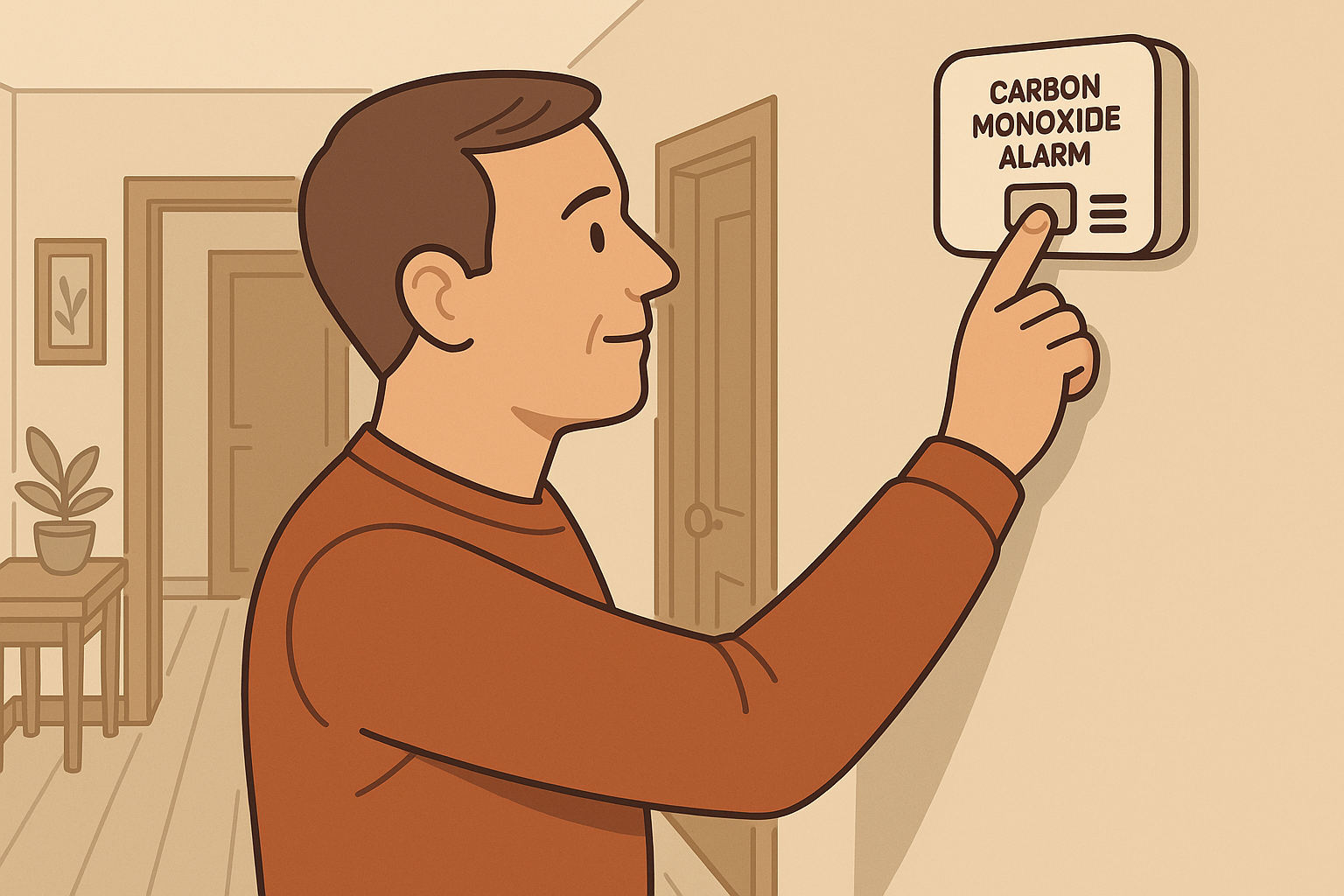Heating Season Safety 101: Carbon Monoxide and Furnace Safety Tips for Oklahoma Homes
Start Smart: Furnace & CO Safety for Oklahoma Winter
When Oklahoma temperatures drop and furnaces roar back to life, safety should come first. Carbon monoxide furnace safety in Oklahoma isn't just a precaution—it’s a lifesaving habit. Each winter, local fire departments and energy providers warn homeowners to inspect their heating systems and carbon monoxide detectors before the first cold snap.
In this guide, we’ll break down how to protect your family from carbon monoxide (CO), what Oklahoma laws say about detectors, and how to make sure your furnace is running safely and efficiently.
Why Furnace and Carbon Monoxide Safety Matter in Oklahoma
Every winter, emergency calls spike across Oklahoma for furnace-related fires and carbon monoxide exposure. According to the American Lung Association, more than 50,000 Americans visit the ER for CO poisoning each year, and the Oklahoma Poison Center reports that these incidents increase as soon as temperatures fall.
In our state, roughly half of all households rely on natural gas for heat. That means every faulty pilot light, cracked heat exchanger, or blocked vent could pose a CO risk. The combination of cold nights, aging equipment, and ice storm power outages makes it especially important for homeowners in Edmond and nearby cities to stay proactive.
Understanding the Dangers of Carbon Monoxide and Furnace Issues
What Is Carbon Monoxide and Why It’s Dangerous
Carbon monoxide is an odorless, colorless gas created when fuels like natural gas, propane, or wood don’t burn completely. It’s called the “invisible killer” for a reason—you can’t smell or see it, but breathing it can be deadly. Symptoms of exposure include headaches, dizziness, nausea, and confusion.
Can a Furnace Cause Carbon Monoxide Poisoning?
Yes. A gas furnace can leak CO if it’s malfunctioning or poorly ventilated. Common causes include:
- Cracked heat exchanger
- Blocked flue or vent pipe
- Dirty burners or lack of oxygen
- Improper installation or lack of maintenance
An electric furnace, by contrast, does not produce CO. But even all-electric homes in Edmond should still have CO detectors, especially if they have attached garages or gas appliances.
Signs Your Furnace Might Be Leaking Carbon Monoxide
Look out for:
- Yellow burner flame instead of blue (sign of incomplete combustion)
- Soot buildup around the furnace or vents
- Rust or corrosion on flue pipes
- Frequent pilot light outages
- Physical symptoms like fatigue or headaches when the furnace is running
If you suspect a CO leak, turn off your furnace, evacuate your home, and call emergency services immediately.
Where to Install Carbon Monoxide Detectors in Oklahoma Homes
Oklahoma law requires CO alarms in all newly built or renovated homes with fuel-burning appliances or attached garages. Detectors should be placed:
- Outside each sleeping area
- On every level of your home
- Near (but not inside) attached garages or furnace rooms
Test alarms monthly, replace batteries yearly, and replace each device every 7–10 years. Write the install date on the back to stay on schedule.
Furnace Safety Tips for the Oklahoma Heating Season
1. Schedule Annual Furnace Inspections
Before the first freeze, have a licensed HVAC technician inspect your system. They’ll clean burners, test for CO leaks, check ventilation, and ensure your furnace flame burns blue. According to local experts, an annual tune-up can prevent most CO leaks and improve efficiency.
2. Replace Air Filters Regularly
Dirty filters restrict airflow, causing your furnace to overwork and potentially misfire. Replace or clean filters every 1–2 months during winter. Edmond’s dust and temperature swings make filter changes especially important.
3. Keep the Furnace Area Clear
Store paints, cleaning supplies, and flammable materials away from the furnace. Many furnace fires start because items are stacked too close to the unit.
4. Inspect Vents and Chimneys
Blockages can trap CO inside your home. Check that all exterior vents are free of debris, snow, or bird nests. If you use a fireplace, have your chimney cleaned each fall.
5. Check CO and Smoke Detectors Monthly
CO alarms and smoke detectors are your first line of defense. Press the test button monthly, replace batteries each fall, and upgrade old models before they fail.
FAQ: What Should I Do if My CO Alarm Goes Off?
- Leave the home immediately and get fresh air.
- Call 911 or your local fire department.
- Do not re-enter until professionals say it’s safe.
- Contact an HVAC professional to inspect your furnace before turning it back on.
How Oklahoma Weather and Power Outages Add Risk
Oklahoma’s unpredictable winters bring ice storms, freezing rain, and power outages. In these emergencies, many residents turn to portable generators or space heaters—but using them incorrectly can be fatal.
- Never run a generator indoors or in a garage, even with doors open. CO can build up to deadly levels in minutes.
- Keep generators at least 20 feet from doors and windows.
- Avoid using gas stoves or ovens to heat your home.
In October 2020, two Oklahoma City residents died from CO poisoning after running a generator inside their home during an ice storm. Firefighters found CO levels over 800 ppm, more than enough to be lethal within minutes.
If power goes out in Edmond or Guthrie, check local warming centers or OG&E outage alerts instead of risking unsafe heat sources.
Oklahoma Utility Programs & Winter Safety Support
- Edmond Electric offers free home energy audits and rebates for upgrading to high-efficiency heat pumps. These systems reduce energy use and eliminate CO risk entirely.
- Oklahoma Natural Gas provides safety resources and reminds customers to call if you see a yellow flame—a sign of improper combustion.
- Oklahoma Fire Departments often offer free smoke and CO alarms to residents who qualify. Check your local department’s community program page for details.
Why This Matters for Edmond Homes & What to Do Next
Winters in Edmond, Yukon, and Guthrie may be short, but they’re intense. With rapid temperature drops and the occasional ice storm, furnace and carbon monoxide safety are essential parts of home maintenance.
If you haven’t had your system checked yet this season, now’s the time. Annual furnace inspections help catch CO risks, improve comfort, and extend your system’s life.
Schedule your fall furnace safety check with A&T Mechanical today. Our Edmond-based team is here to help keep your home safe, warm, and ready for whatever Oklahoma weather brings.
Final Safety Takeaways & Next Steps
Carbon monoxide prevention starts with awareness and regular maintenance. By scheduling annual tune-ups, testing detectors, and knowing the signs of trouble, Oklahoma homeowners can protect their families year-round.
Don’t wait for the first freeze, take action now for a safer heating season.
Written by A&T Mechanical | Updated October 2025





